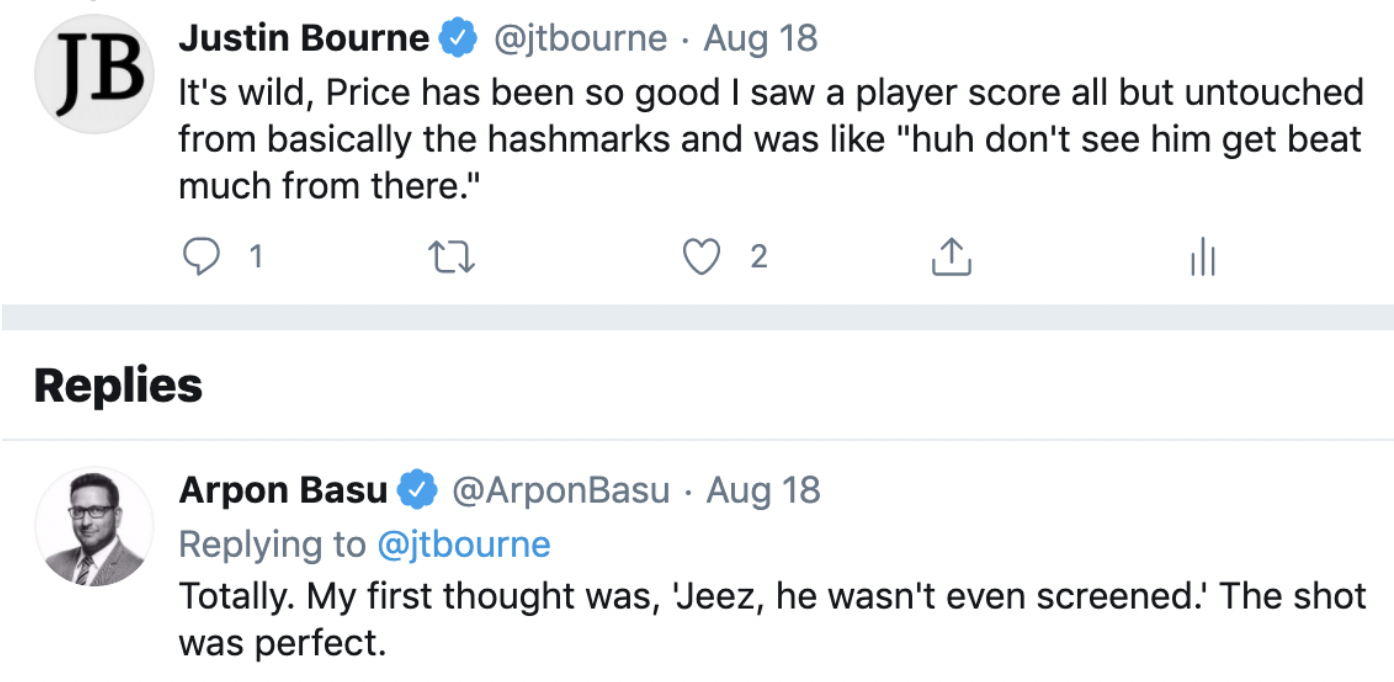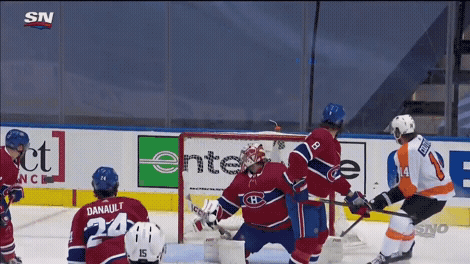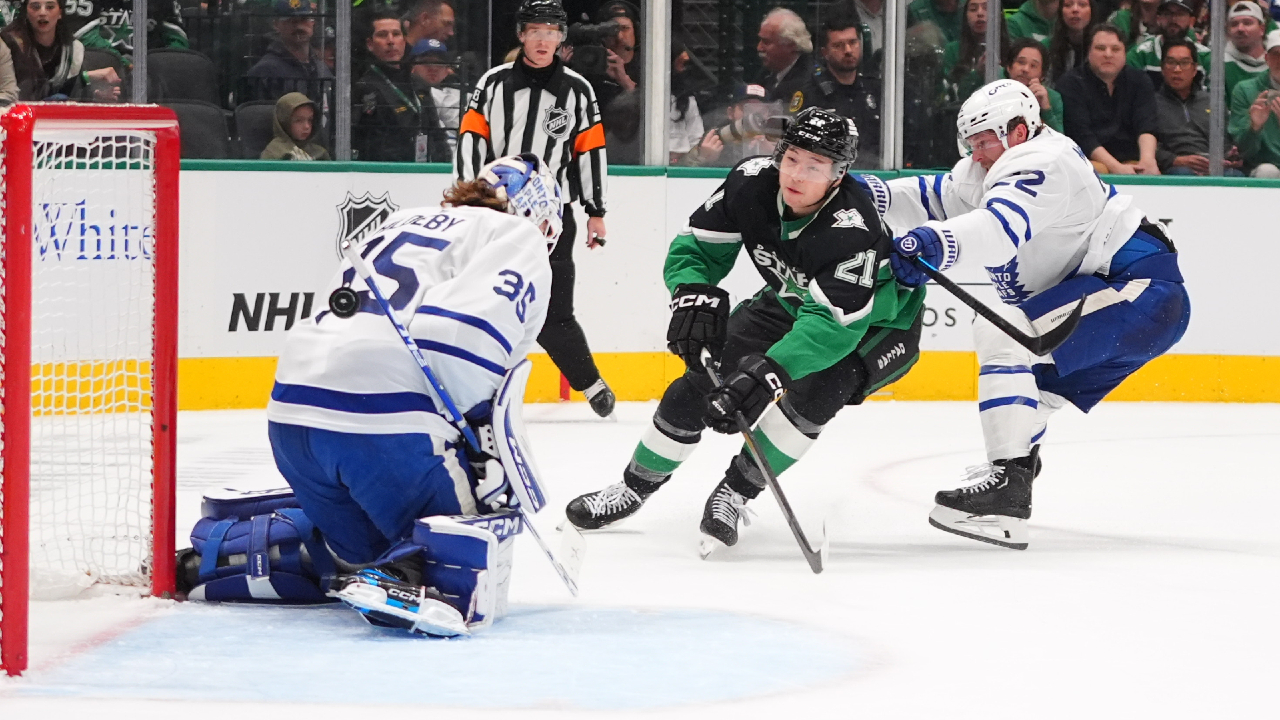
As much as fans and maybe the league itself don’t want it to be true, the NHL is a defence-first league. The NBA exists at the other end of the spectrum, where a perfectly executed offensive play and shot is essentially unstoppable (say, a step-back jumper from a seven-footer like Kevin Durant or Dirk Nowitzki). On the ice, a perfectly executed defence is all-but impenetrable.
It’s why Columbus can beat or at least hang with more skilled teams. It’s what makes Boston The Bruins. It’s how the Blues can win the Stanley Cup without a cadre of superstars.
To make matters worse for lovers of offence, goalies continue to get better to the point where getting beat unscreened on basically any shot leaves people going “Geez, I dunno about that one, keeper.”
To wit: this goal, a wide-open look from the top of the hashmarks that pings the crossbar/post elbow, made me momentarily wonder if it was a “bad goal” on Carey Price. That points to just how extreme expectations have become for goaltenders.


Because of these two factors, offence in the NHL has essentially become trying to create chaos, then taking what the defence gives you. You’re looking to force the defence to “change their shape,” which aims to force coverage switches given those ask the D to make decisions and communicate with their teammates. That’s where mistakes can come. You’re constantly prodding to the inside and getting rebuffed, then asking the question “Are you prepared to stop me if I challenge in?” and making the defence answer.
The most effective methods of making the D change their shape are moving the puck from east-to-west sides behind the net (as defencemen generally hand off their check to their partner instead of chasing around the zone man-on-man), and moving the puck low-to-high (where low forwards can get lost in traffic).
At the same time, though, you can’t just be moving the puck side-to-side and low-to-high around the outside. Once you’ve made the defence switch and think, you’ve still gotta find your way in. Teams like the Islanders and Blue Jackets, who have the work ethic and communication down to voraciously defend, are more than happy to let you have your party out by the yellow paint and trust their goaltenders to stop any pucks that come from out there. They work to keep you to the outside.
The Toronto-Columbus series was almost too perfect for illustrative purposes here.
Even with all these defensive forces working against them, offence in the NHL has ticked slightly up the past few seasons, as crazy-skilled players and creative thinking have combined forces to generate new avenues of scoring.
The one that stands out to me most after watching weeks of hockey all day every day isn’t new, per se, but man it’s been refined and perfected to combat both of the problems I’ve mentioned above: great goaltending and “keep ‘em to the outside” defence.
That would be the off-hand redirect “shot.”
Players today rarely have clean possession of the puck in the offensive zone for long, let alone in the slot. It’s hard to get there with it and, and while you can get there without it (which is a nice change from the ‘90s where you’d take 100 crosschecks to the lower back for having such audacity), you’re never going to be able to get a pass to the slot and have the time to do much.
So, the off-hand re-direct happens when a player skates through a dangerous area of the ice and his teammate fires a “shass” off the net for a shovel-tip of sorts. (A “shass” being a shot-pass, a play with enough gusto to get by a goalie like a shot, but that was never meant to go on net without another touch).
On the power play, all offences have a “bumper” guy (because league copy-cattery is absurd right now) who pops high as an option for his teammates when the puck is low and slides low when the puck is high. For a number of years now we’ve seen that player looking to get a high-tip on “shass” plays, which isn’t exactly what I’m seeing more of these days; I’m seeing it at 5-on-5 on rushes and even offensive zone possessions. Timing a player’s arrival in that dangerous spot for a quick touch redirect is wreaking havoc on goaltenders.
Here’s a look at the “shovel shot” off the “shass,” which is much simpler than I’m making it sound. A couple of these are just high-tips, but the point remains the same – get the puck coming at the net from a different angle.
Recently on Hockey Night in Canada, Kevin Bieksa explained how a D-man taking a shot from the point would much rather shoot it off the side of the net towards teammates sticks than risk getting a shot blocked, and that concept feeds into the shass-and-off-hand-shovel-push we’re talking about. Shot-blocking in the NHL is at a premium, and is one of the ways great defensive teams excel at keeping pucks from their net. The aforementioned Islanders and Blue Jackets defences were numbers one and three in the league in blocks-per-game, because they keep everything to the outside.
There has always been an understanding that tips are good and even shooting for teammates’ sticks has been a smart next level. But as defensive structures have improved it’s gone from “stand in front and have a guy fire it into the crowd” to looking for plays higher out from the goalie where a more dangerous redirect can take place.
Old guy note on this: this play, particularly from farther out when the player redirecting or shooting the shass has to put some additional mustard on it, was way harder before one-piece sticks. If you ever tried this with even a one-percent-soggy wood blade you might as well have passed it to the goalie for a whistle. Today’s hard stick blades that come with some flex make adding force to the shass possible, as opposed to just having it die off your blade.
Keep an eye out for this play in the next game you watch and you’ll likely note just how common it’s become. It takes advantage of teams allowing players without the puck to get to the inside, it only takes a quick second of touch on the puck, and it sends the puck at the goalie from a new angle (and makes them move).
If nothing else, a well-executed off-hand shot off a shass likely results in a rebound and chaos at the net, and in a bounce-heavy game like hockey, that in itself is an offensive win.






